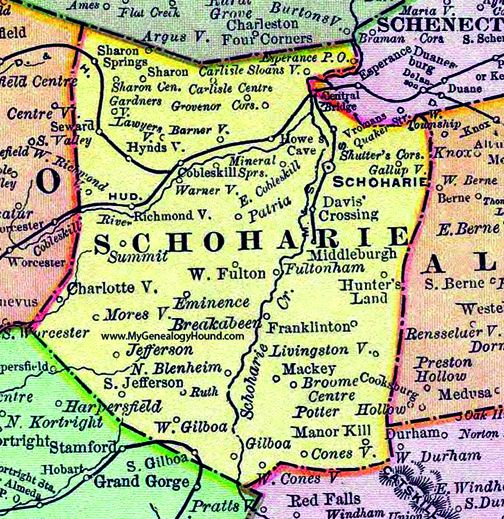Subscriptions
Menu
Advertisements
2020 Census starts soon--but how accurate are numbers?
12/31/2019 |
By Patsy Nicosia |

It’s 2020.
And time to stand up and be counted for the 2020 Census.
It’s quick, easy, and safe, the Census’ Taylor Brose told Schoharie County supervisors at their final meeting of 2019.
But already, there are concerns about troublesome “tracts” and even how accurate they are.
Census numbers are used for everything from setting the number of Congressional seats to awarding federal grants, Mr. Brose told supervisors.
They’re also important in determining funding for things like schools, roads, hospitals and housing, and are used to tailor relief in disaster recovery efforts.
The Census isn’t counted town-by-town, but rather by tracts—which can cross town—but not county—lines; for example, Census Tract 7404 includes Charlotteville, Summit, Richmondville, and Warnerville.
“You want to make sure your community is counted accurately,” Mr. Brose said.
“This is an important Census for New York State.”
Even when the statistics the Census gathers are “inherently inaccurate”? asked Esperance Supervisor Earl VanWormer—who’s told he lives where he does not.
“When we go for grants, we’re told they come from the Census,” Mr. VanWormer said.
“But they tell me I’m in Montgomery County. I don’t know how you come up with these tracts, but they’re not accurate,” he said; others in Esperance are told they’re in Duanesburg--Schenectady County.
“And what about when people are called for jury duty [for another county]?”
And if the Census isn’t accurate, added Fulton Supervisor Phil Skowfoe, then neither are supervisors’ “weighted” votes which are based on them.
Schoharie Supervisor Alan Tavenner had already asked why Central Bridge has been split into two towns--Schoharie and Esperance--for the Census--something that makes it difficult when applying for grants.
Mr. Brose told Mr. Tavenner he’ll look into question--but it’s too late to change for the 2020 Census, which is kicking off now.
Census 2020 will begin in March with mailings “inviting” households to go online to fill out the questionnaire.
Then, from April through July, Census takers will go door-to-door to survey who haven’t responded or “self-reported.”
Self-reporting is already expected to be an issue in that troublesome Tract 7404, where in 2010, just 76.5 percent of households mailed back their questionnaire--better than the hardest-to-count tracts nationwide, but still lower than most tracts.
According to those 2010 statistics: 26 percent of Tract 7404’s households were renter-occupied (an estimated 367 households), 17 percent of the tract “is in poverty with another 15 percent near poverty level,” 23 percent had no internet, and 10 percent had no computer devices at home.
Lack of internet and broadband will continue to be a problem countywide in 2020, Mr. Brose said—it’s estimated 20 percent of all household still won’t self-report—and the Census will be working with local libraries to ease internet access.
Supervisors asked how snowbirds are counted: “It’s where you sleep 51 percent of the time,” Mr. Brose said.
That led Cobleskill Supervisor Leo McAllister to point out that for maximum benefit, that 51 percent needs to be in Schoharie County.
STARTING SOON...
Completing the 2020 Census should take three to five minutes, the effort’s Taylor Brose told supervisors.
The Census asks:
• How many people are living or staying in your home?
• Whether the home is owned or rented.
• The sex, age, and race of each person in the home.
• Whether a person in the home is of Hispanic, Latino, or Spanish origin.
• How the people in the home are related.
Beginning in March, “invitations” to respond will be mailed out, asking people to go online—the preferred method--to complete the Census questionnaire.
People in areas less likely to respond online will receive a paper questionnaire along with their invitation; the invitation will also include information about how to respond online or by phone.
Mid-March, reminder letters will go out; those who haven’t responded by April will get a reminder postcard, followed by a reminder letter and paper questionnaire.
By the end of April, those who haven’t responded will get a final reminder postcard before Census workers begin going door-to-door; in Schoharie County that means about 400 people will go knocking.
The 2020 Census has been controversial because of failed efforts to include a citizenship question.
Federal funding cuts for the effort have also dropped the number of field offices in New York State from 35 in 2010 to 21 in 2020, one reason for the online emphasis.









